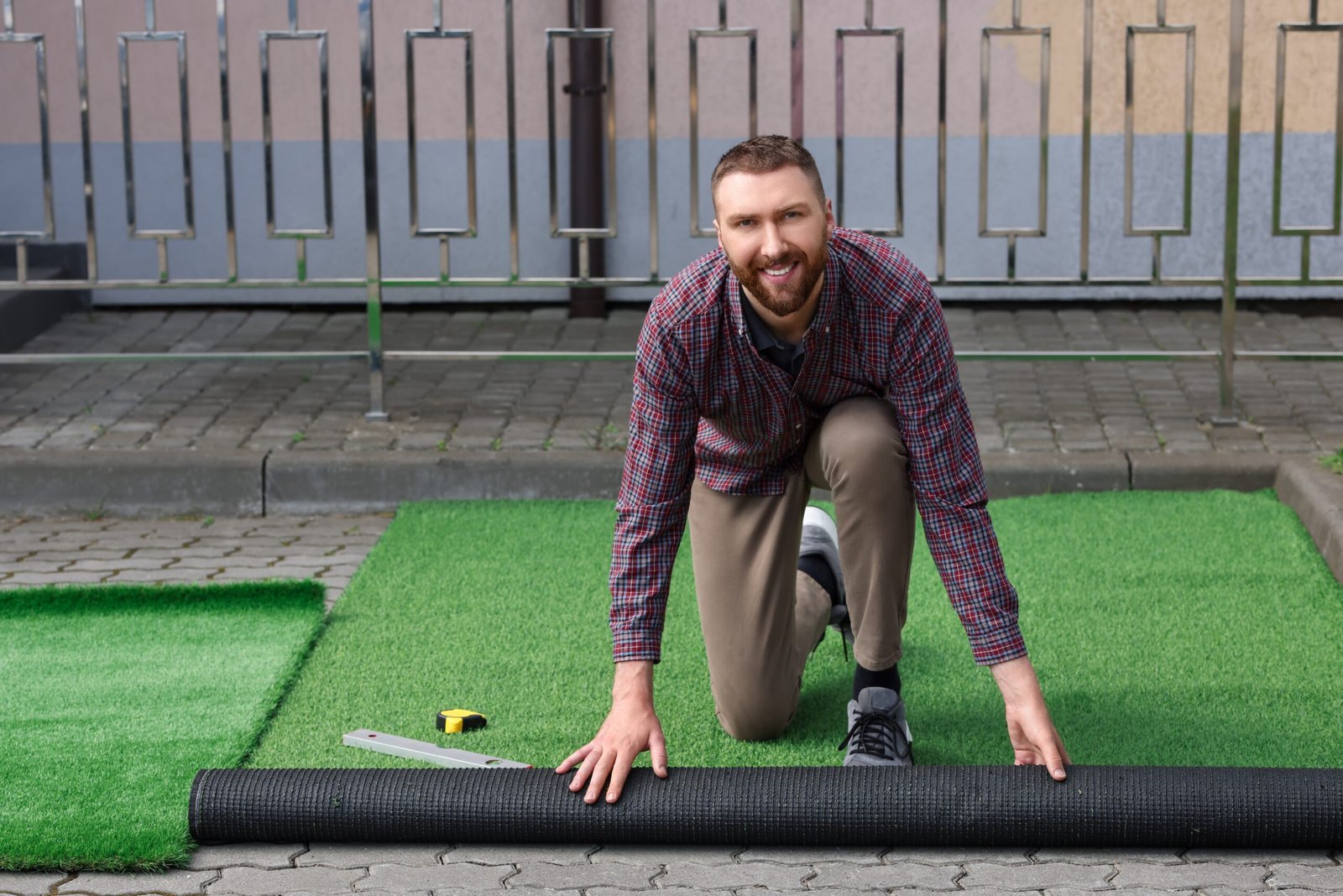Artificial Turf Maintenance: Tips for Keeping Your Lawn Looking Perfect Year-Round
Artificial turf has become a popular choice for homeowners seeking a lush, green lawn with minimal maintenance. Unlike natural grass, which requires constant care, artificial turf offers a low-maintenance alternative that can look pristine year-round. However, while it doesn’t need mowing or watering, artificial turf does require some upkeep to ensure it remains in top condition. Here’s a guide to maintaining your artificial lawn and keeping it looking perfect throughout the seasons.

Regular Brushing
One of the key maintenance tasks for artificial turf is regular brushing. Over time, the fibers can become flattened due to foot traffic, furniture, or debris. Brushing helps to lift and redistribute the fibers, maintaining the natural appearance of the turf. Use a broom with synthetic bristles or a specialized turf rake to brush the surface. Aim to do this at least once a month, or more frequently if your turf sees heavy use. Brush in different directions to ensure an even lift.
Cleaning Up Debris
While artificial turf doesn’t need watering, it can still accumulate leaves, sticks, and other debris. Regularly remove these items to prevent them from decomposing and potentially causing odors or creating a breeding ground for insects. For small debris, a leaf blower or a broom works well. For larger items or more stubborn debris, use a rake or even a garden vacuum.
Dealing with Stains and Spills
Artificial turf is relatively stain-resistant, but it’s still important to address spills and stains promptly. For liquid spills, blot the area with a clean cloth and rinse with water. Mild soap and water can be used for stubborn stains, but avoid harsh chemicals as they can damage the turf. For more persistent issues, a mixture of vinegar and water can help. Always rinse thoroughly after cleaning to prevent any residue buildup.
Checking and Repairing the Turf
Regular inspections are crucial to maintaining the integrity of your artificial turf. Look for signs of wear, such as loose seams, shifting, or areas where the infill has migrated. If you notice any problems, address them promptly to avoid additional damage. For minor repairs, you might be able to use a turf adhesive or seam tape. For more significant repairs, it’s wise to consult a professional.
Infill Maintenance
Most artificial turf systems include an infill material, such as rubber or sand, which helps keep the fibers upright and provides cushioning. Over time, this infill can settle or migrate. Check the infill levels periodically and top it up if necessary. You can use a broom or a specialized infill spreader to evenly distribute the material and ensure the turf remains resilient and supportive.
Avoiding Heavy Loads
Be mindful of heavy items placed on your artificial turf. While it is durable, placing excessively heavy objects, like large planters or heavy furniture, can cause dents or deformation. If you must place heavy items, try to move them around occasionally to avoid permanent damage to the turf.
Seasonal Considerations
Different seasons can affect your artificial turf in various ways. In the summer, ensure the turf isn’t excessively heated by direct sunlight. A quick rinse with cool water can help lower the temperature if it becomes too hot. In the winter, keep an eye out for snow and ice. Use a plastic shovel to remove snow, avoiding metal tools that could damage the turf. If ice forms, let it melt naturally, as de-icing chemicals can affect the turf’s appearance and longevity.
Conclusion
Artificial turf offers a beautiful, low-maintenance lawn solution, but it still requires some care to keep it looking its best. By following these maintenance tips—regular brushing, cleaning debris, addressing stains, inspecting for damage, and managing infill—you can ensure your artificial lawn remains vibrant and inviting throughout the year. With a little attention and routine upkeep, your artificial turf can continue to provide a stunning, hassle-free outdoor space for years to come.

